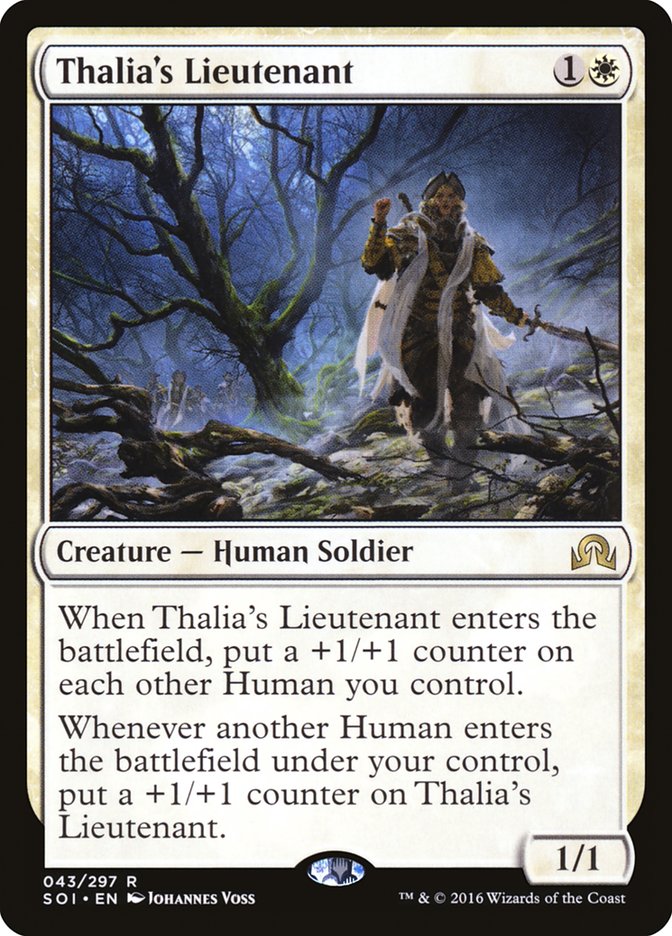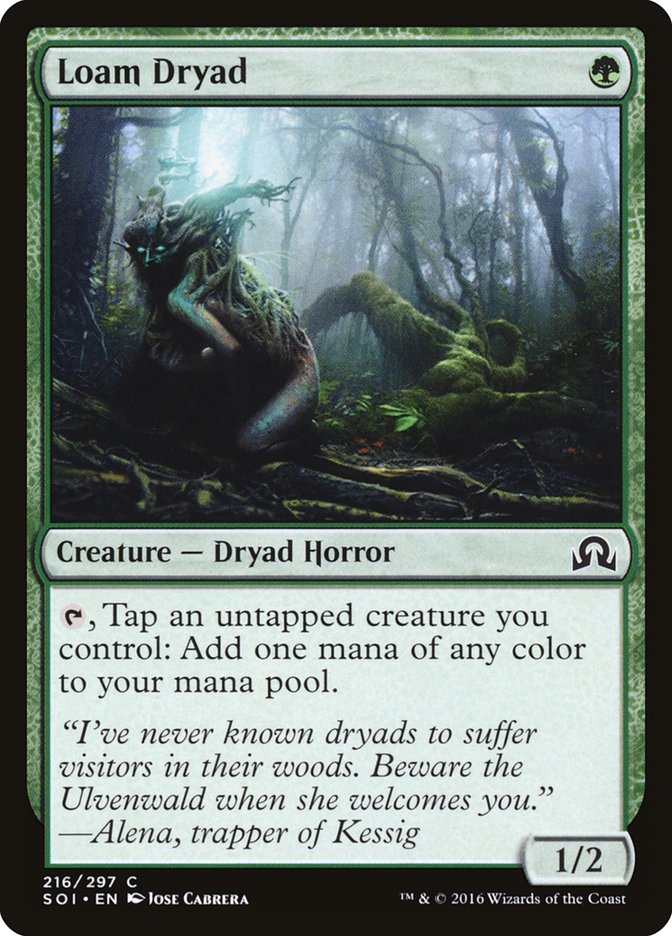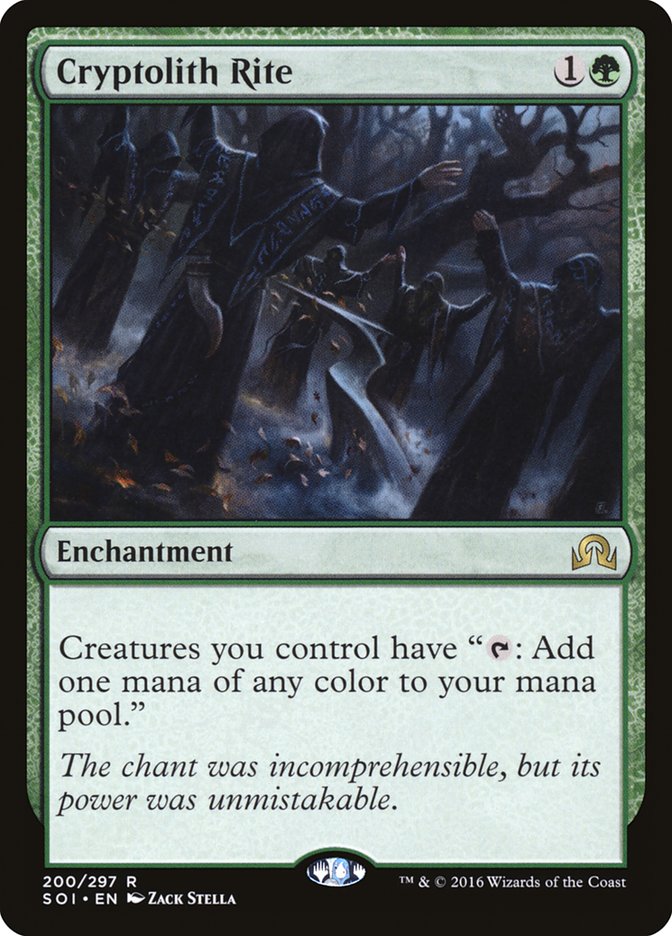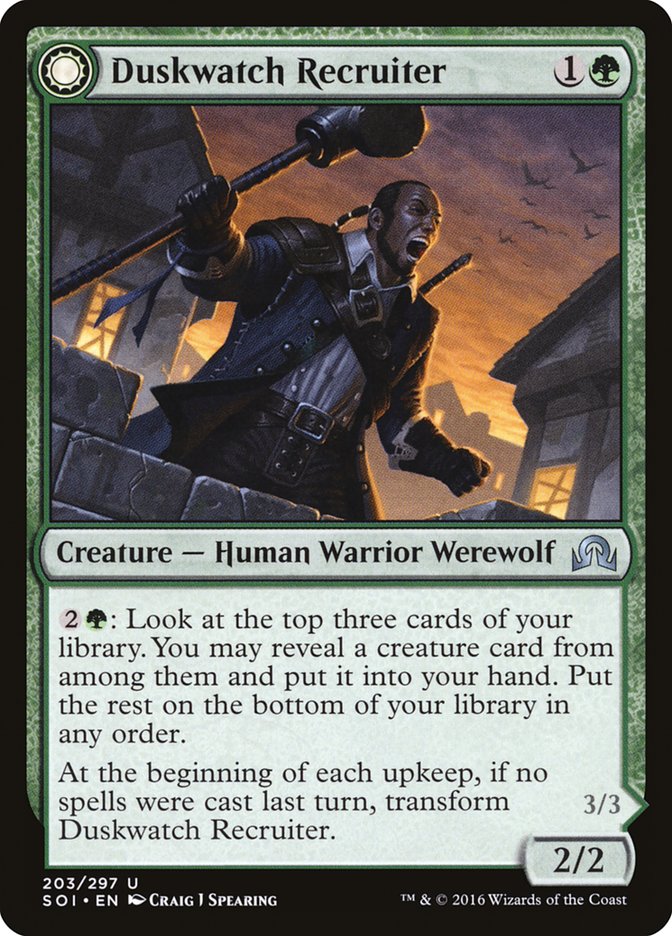Me: I have no idea. Maybe it’s bad. I don’t really know anything yet.
After the set’s out and I’ve drafted a few times, I’ll generally get a new wave of inspiration and new ideas after playing with some of the cards that are harder to evaluate. Cards or synergies that really impress me in Limited will start working their way into Constructed decks. This time, that happened with Stensia Masquerade, to disastrous results (Vampires are really bad).
Around seven to ten days before the tournament, I start feeling pressure to try to figure out what I’ll actually want to play. This doesn’t mean I stop trying new ideas; it just means I start by testing each of my new ideas against the best deck or two.
Usually, by the Tuesday before the Pro Tour I’ve basically given up. The tournament is only three days away and none of my ideas have worked. I start to pick between the best known decks and the best decks my teammates have found.
Wednesday morning, I’ll almost always wake up with a new idea. Something I want to try that combines everything I’ve learned, something that focuses on trying to beat the known enemies rather than just exploring a line built into the cards.
For #PTSOI I had resigned myself to playing 18 Plains with Anafenza, Kin-Tree Spirit before I woke up on Wednesday and built this:
Creatures (26)
- 4 Nantuko Husk
- 1 Hangarback Walker
- 4 Zulaport Cutthroat
- 3 Ayli, Eternal Pilgrim
- 3 Archangel Avacyn
- 4 Thraben Inspector
- 3 Tireless Tracker
- 4 Loam Dryad
Lands (22)
Spells (12)

I quickly added that it wanted some number of Secure the Wastes.
Bant Company felt like the most important target, and Zulaport Cutthroat had been the best weapon I’d found against it. I hoped that keeping my curve low, especially with Ayli, Eternal Pilgrim (which is likely the best early blocker in the format), and playing removal would keep me competitive against white aggro and that the Clues would let me grind out the midrange and control decks. I knew that I needed removal there; otherwise, Kalitas, Traitor to Ghet would be unbeatable.
I was excited about some of the things I was doing differently compared to other decks I’d built, like playing painlands over creature-lands. I wanted to curve out and I thought I’d never have time to activate a creature-land because I’d put my mana into Clues instead. Also, Clues would give me lots of ways to use colorless mana, and Loam Dryad and Cryptolith Rite would give me colored mana, so I thought I wouldn’t actually end up taking very much damage from my lands.
I was also very excited to have Archangel Avacyn in the deck. I was really impressed with Avacyn early, but none of our decks were playing it and it wasn’t getting much play on the SCG Tour®, so I thought people might not be prepared for it.
I shared the list with my team and asked Josh Utter-Leyton and Luis Scott-Vargas to help me test it. They reported back that Archangel Avacyn had been really high-variance. Sometimes it was great, but sometimes it was really bad. They also thought removal wasn’t worth it, that it was better to just lose Game 1 to Kalitas, and they didn’t think white was worth it.
Early on, one of the decks they’d liked most was G/B Collected Company, but the problem was, outside of Collected Company, the card advantage engine had been Smothering Abomination, which just wasn’t good; the plan against removal was to play a creature that was bad against removal.
We started testing G/B Company again, but with Tireless Tracker, Ulvenwald Mysteries, and a larger emphasis on Cryptolith Rite. This felt better, like a step in the right direction, but Ulvenwald Mysteries still mostly felt like a sideboard card. It was just too slow against some decks.
Thursday morning, I woke up with another idea. At first, it was more similar to my idea from the day before, but with more Clues and fewer expensive white cards, but after a couple of test draws I decided Bygone Bishop was terrible and white wasn’t worth it, I put together B/G Company minus Company, which was like B/G Company, but I had Hangarback Walker, four Cryptolith Rite, and Ulvenwald Mysteries. I asked Justin Cohen to play against me with B/G Company to figure out which deck was the better version of the other.
I wanted another two-drop, so I tried Duskwatch Recruiter, which we didn’t have in the Company deck at that point. Matt Nass said they’d tried it a little and didn’t like it, but that that was probably when they only had around one Cryptolith Rite in their deck.
We made quick progress in those games. Ulvenwald Mysteries and Tireless Tracker still felt too slow, but I felt like I had a big advantage just because a lot more of the Company deck’s lands entered the battlefield tapped. Cryptolith Rite felt like the best thing going on, and as soon as we got that going with Duskwatch Recruiter, both decks jumped up to playing four Recruiters over the next few games.
It quickly became apparent that we were really just a Duskwatch Recruiter deck. Where I’d previously included Clues to give me options to spend extra mana from Cryptolith Rite, now I realized that, with Collected Company and Catacomb Sifter, I could consistently find Duskwatch Recruiter, and that let me spend any amount of mana by itself. From there, the Husks and Cutthroats just make sure that you win the game after activating Duskwatch Recruiter enough.
I had to admit that I wanted Collected Company over Ulvenwald Mysteries, and then our lists converged very quickly, as I convinced them to go up to three Cryptolith Rite (and they convinced me to go down to three), and I convinced them to maximize one- and two-drops, playing four Recruiters, and to drop all the tapped lands other than Hissing Quagmire. I wanted to cut Liliana, Heretical Healer, but they really liked its ability to add a lot of creatures for Nantuko Husk or return Zulaport Cutthroat. I ended up playing one Liliana and a Hangarback Walker where most of them played two Lilianas.
I played:
Creatures (30)
- 4 Nantuko Husk
- 4 Elvish Visionary
- 1 Liliana, Heretical Healer
- 1 Hangarback Walker
- 4 Catacomb Sifter
- 4 Blisterpod
- 4 Zulaport Cutthroat
- 4 Duskwatch Recruiter
- 4 Loam Dryad
Lands (23)
Spells (7)

In the end, I thought our deck was great, especially for the metagame we predicted. I wanted to find something that beat white aggro decks and Bant Company, and I think this deck is very good against both of those and any other creature decks. Unfortunately, two of my opponents had Descend upon the Sinful, and others had Languish and Kalitas, Traitor of Ghet, so it wasn’t as easy as I’d hoped.
Our sideboard wasn’t especially well-tested, and I’d definitely reevaluate a lot of it going forward. One card that really interests me as a one-of in the maindeck or sideboard is Gilt-Leaf Winnower as an answer to Kalitas, Traitor of Ghet that can be found with Duskwatch Recruiter.
Moving forward, I still think the deck should be a serious consideration in Standard, but the Pro Tour should really shake things up with eight decks in the Top 8 and tons of new approaches showcased.
The Platinum Changes
[Copy Editor’s Note: The following section was written before the Platinum appearance fee reversal. For Sam’s most recent take, continue reading.]
As a final note, because I’m sure people would ask, yes, I’m disappointed with the announcement changing Platinum appearance fees and increasing the Worlds prize payout.
It’s my understanding that early on they wanted to minimize flashy prize payouts to avoid associations with gambling, but now that eSports are drawing headlines with much larger prizes, it’s safe to follow suit, and this seems like an easy way to catch some media attention. When I first heard about it, I thought it was unfortunate for the players that money would be distributed in a way that’s worse for them to make it look better, but ultimately not that big of a deal. That was before I understood that the changes would take place for next year, impacting appearance fees for the year people have already been working toward.
I think the reduction in Platinum appearance fees for the upcoming season is completely unacceptable. When new thresholds were announced for Platinum for next year, everyone thought they understood what earning Platinum meant, and this is nothing like that expectation. I’m optimistic that we’ll see a quick and substantial reaction to the public objection to this move, and I’m grateful for the support of the community.
Assuming that just that part is fixed, the change is morally permissible, but still a big step backwards. The Grand Prix cap, the rule that only a player’s six highest GP finishes count for yearly Pro Points, was designed to make it easier to be a pro player without needing to attend every single event. Moving all the money away from being awarded for meeting a known, predictable threshold toward a moving target in a race with every other player negates a lot of that and creates a lot of unnecessary stress and uncertainty for players trying to make a living off Magic.
I’ve been doing this a long time. It’s what I do, and I love it. I’m not going anywhere, and I’ll be fine regardless of how these things settle. I can’t say the same for all of my peers, and I think it would be a real tragedy if WotC can’t fix this. It chases away anyone in a less stable position than I am, anyone who can’t handle the swings in payouts or the risks associated with relying on a company that can no longer be trusted.
Additional Comment on the Platinum Reversal
WotC has announced that, due to player feedback, they’ll be honoring current Platinum benefits and increasing the prize for Worlds for next year, announcing further changes at Pro Tour Eldritch Moon.
First, I’d like to thank the community for the support. I believe Wizards knew pros would be unhappy with this change, but thought they could “get away with it,” but determined otherwise based on the larger public reaction, so your support means a lot.
Second, I know a lot of people have expressed sentiments that Wizards has broken their trust by even attempting something like this, and even after the fix, they feel worse about things moving forward. I feel differently.
I’m not an employee of StarCityGames.com or of Wizards of the Coast. I have no legal protections for my income. At the same time, I’m not worried about my job security. It’s not because I trust either company to have a serious interest in my wellbeing. I believe both companies will do what is best for them, and I’m both cases, I believe I’m part of that.
No matter what you do, I think the best job security comes from doing it well enough to be irreplaceable. Moving forward, I know that Wizards now knows how much the community has our backs, so they know that it’s harder to cut support for their pros than they may have previously thought. As far as I’m concerned, it should only get better from here, and I have everyone who used #paythepros to thank for that.







